The Innovativeness–Optimism Nexus in Autonomous Bus Adoption: A UTAUT-Based Analysis of Chinese Users’ Behavioral Intention
Abstract
1. Introduction
2. Literature Review
2.1. Theoretical Framework: Adaptation of UTAUT for AB
2.2. Hedonic Motivation: The Pleasure Principle
2.3. Optimism: The Technology Enabler
2.4. Innovativeness: The Meta-Antecedent
3. Methodology
3.1. Questionnaire Design
3.2. Data Collection
4. Results
4.1. Reliability and Validity Test
4.2. Pathway Analysis and Hypothesis Test
5. Discussion
5.1. Rational Optimist in AB Adoption
5.2. Service-Mediated Adoption Pathways
5.3. Cultivating Early Adopters: A Utilitarian Approach
5.4. Innovativeness as the Adoption Catalyst
5.5. User Experience Design for Sustained Adoption
6. Conclusions
6.1. Theoretical Implications
6.2. Practical Contributions
6.3. Limitations and Future Research
Author Contributions
Funding
Data Availability Statement
Conflicts of Interest
Abbreviations
| AB | Autonomous Bus |
| UTAUT | Unified Theory of Acceptance and Use of Technology |
| PE | Performance Expectancy |
| EE | Effort Expectancy |
| HM | Hedonic Motivation |
| SI | Social Influence |
| OPT | Optimism |
| IS | Innovativeness |
| BI | Behavioral Intention |
Appendix A
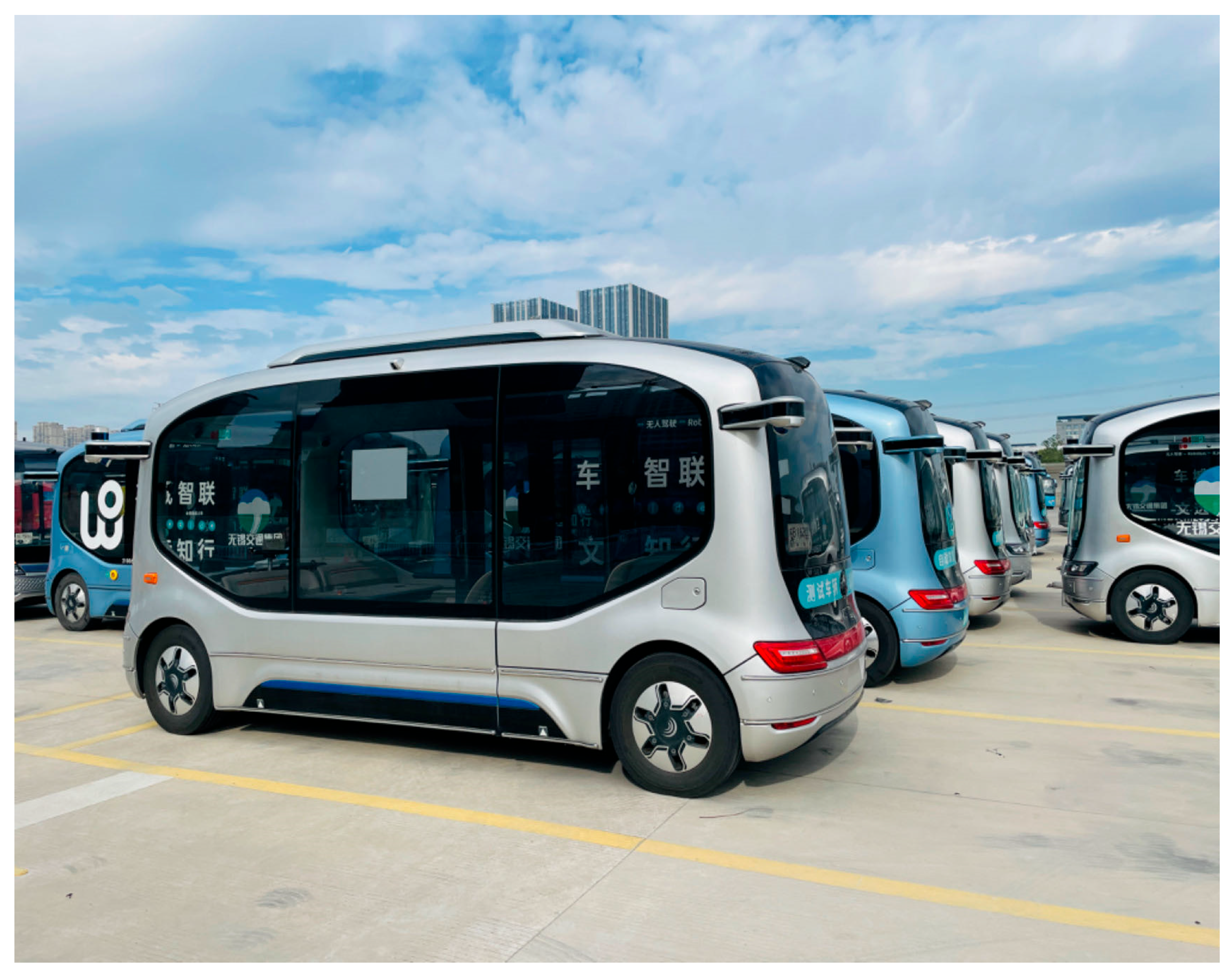
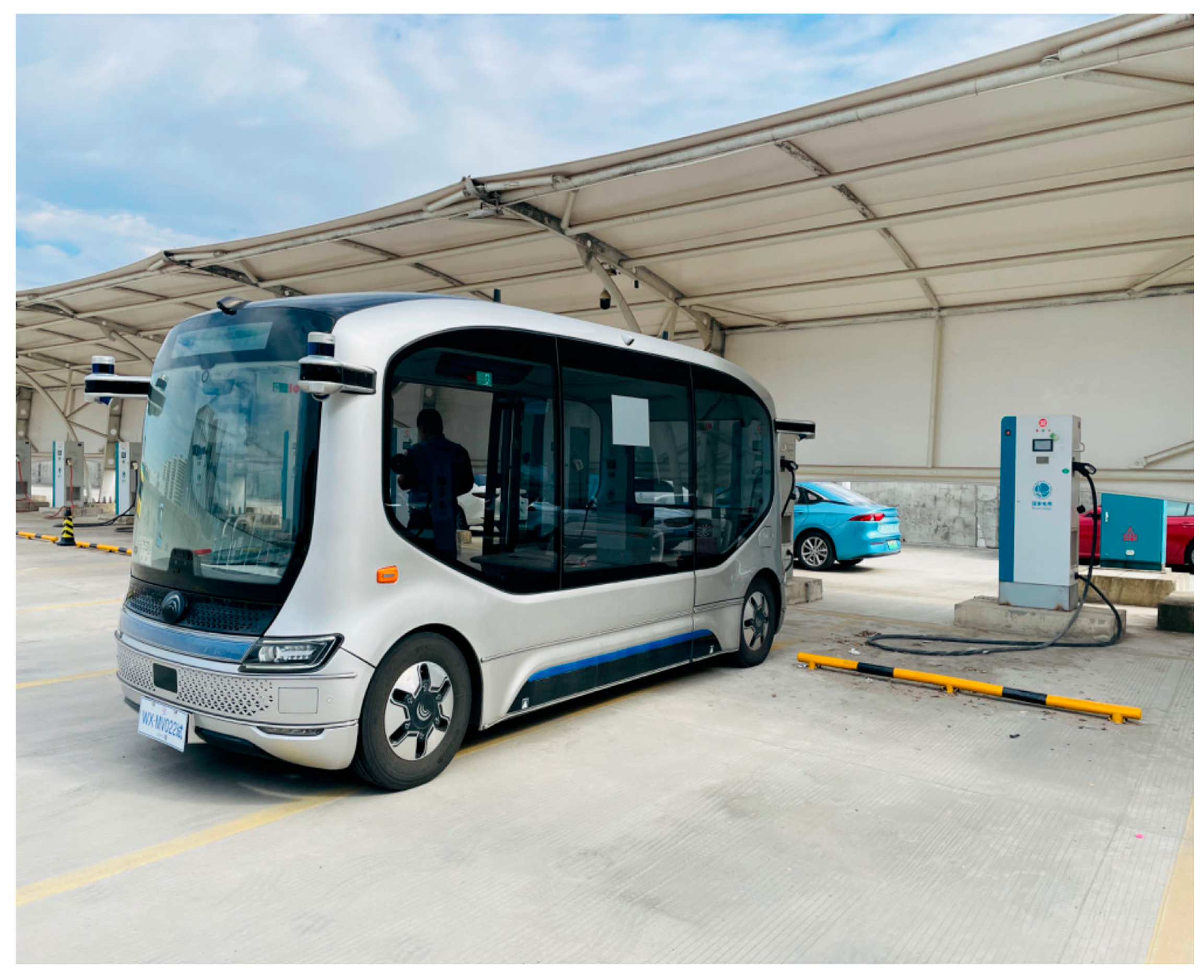
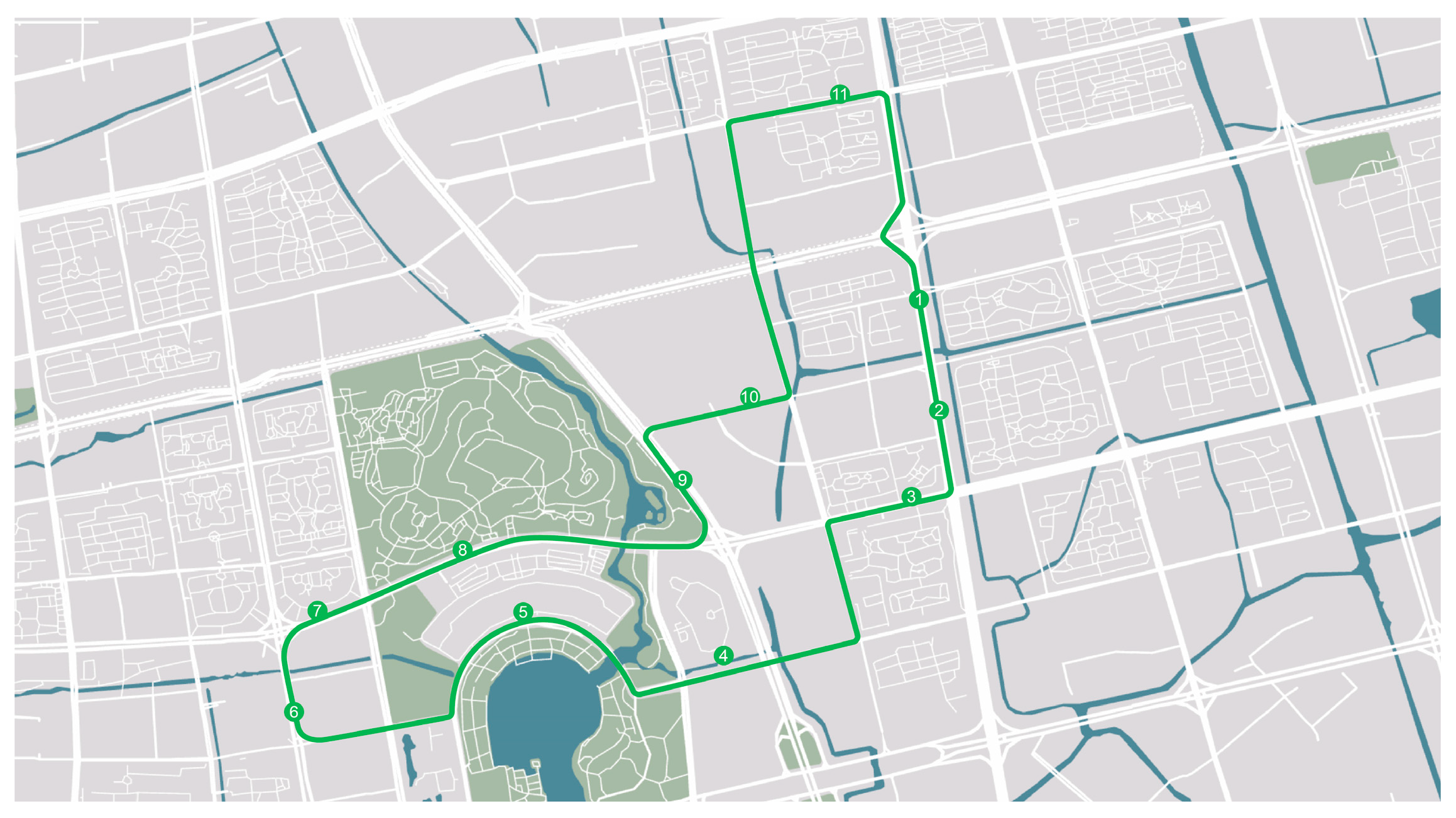
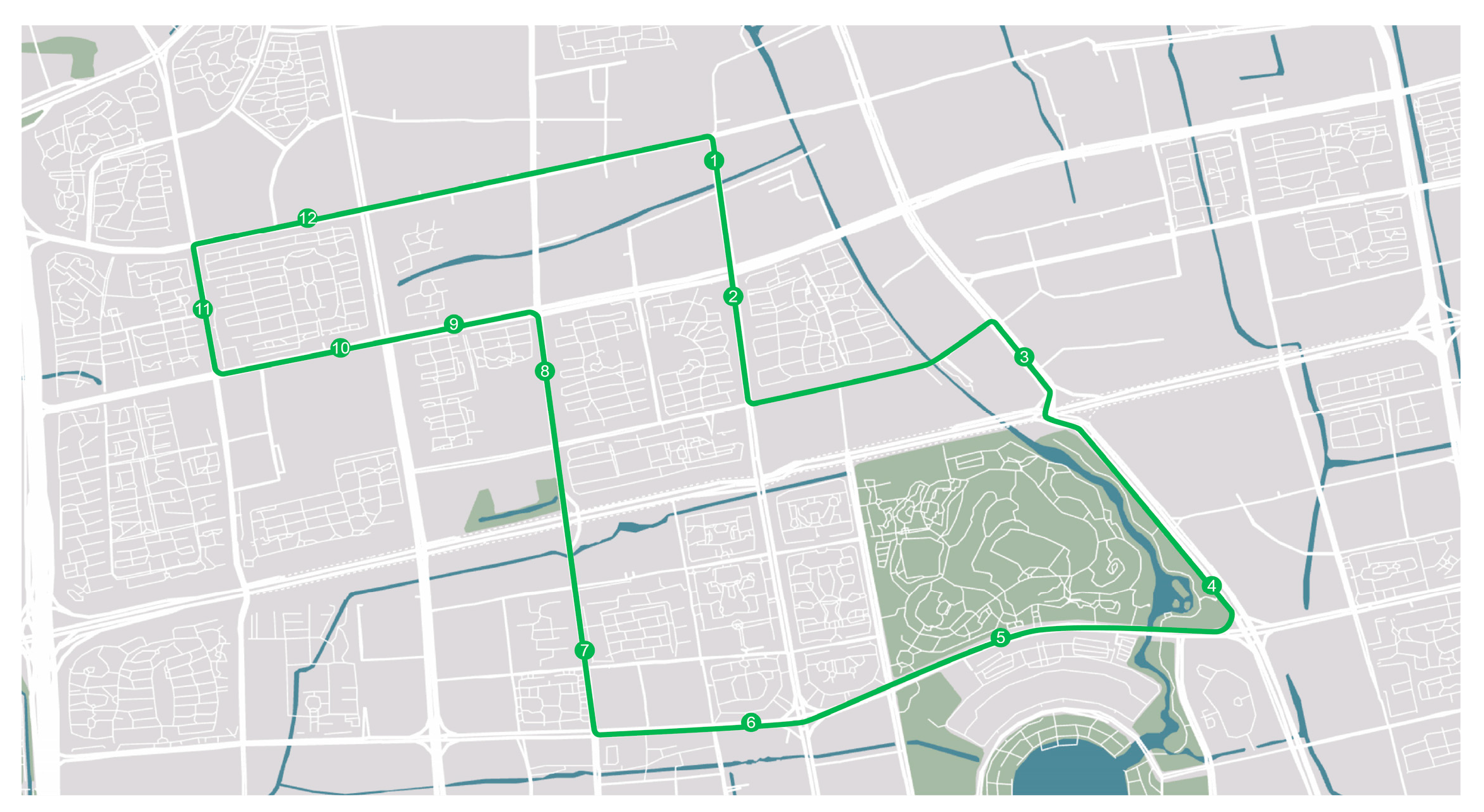
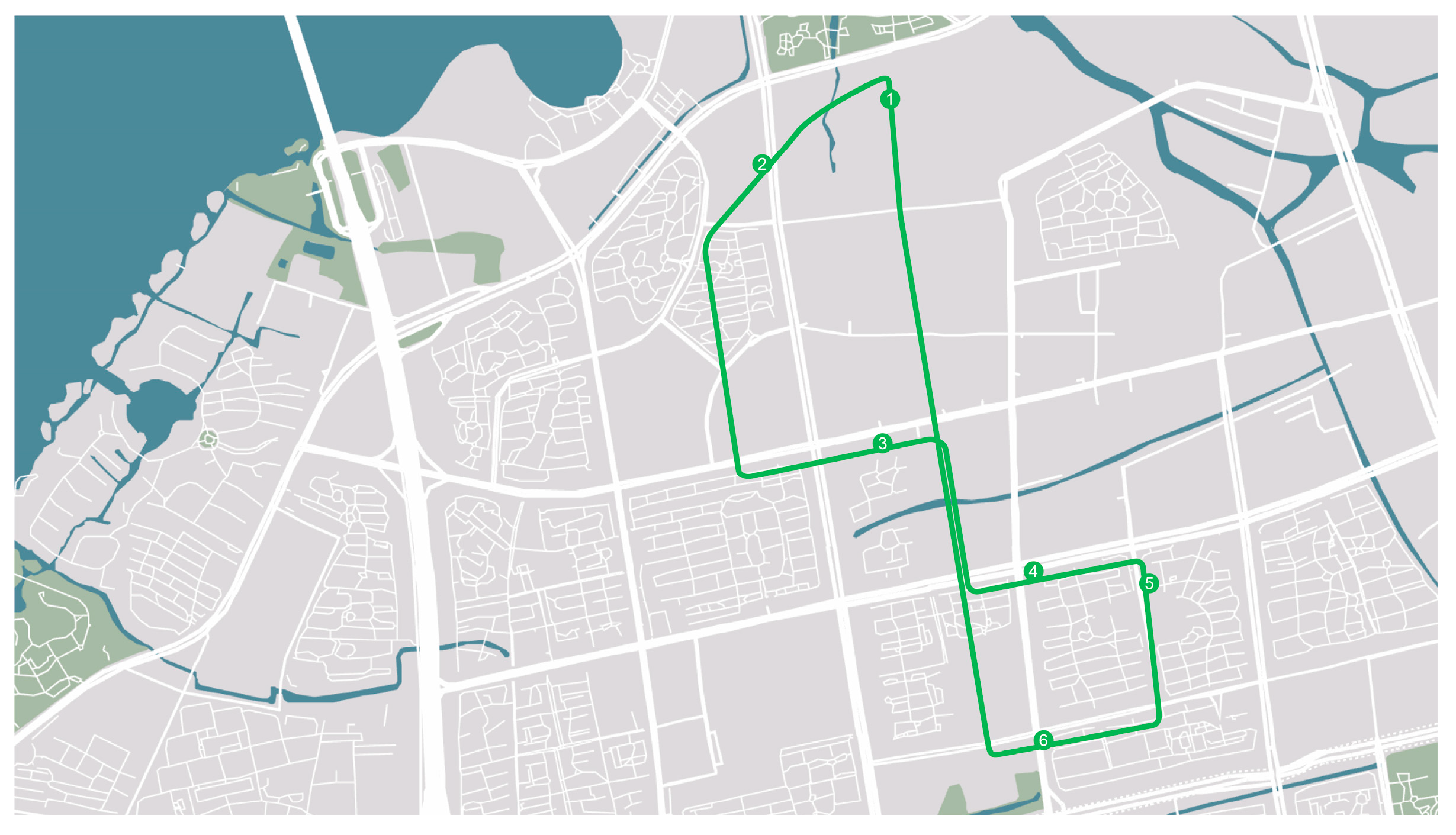
References
- Ercan, T.; Onat, N.C.; Keya, N.; Tatari, O.; Eluru, N.; Kucukvar, M. Autonomous electric vehicles can reduce carbon emissions and air pollution in cities. Transp. Res. Part D Transp. Environ. 2022, 112, 103472. [Google Scholar] [CrossRef]
- Le Hong, Z.; Zimmerman, N. Air quality and greenhouse gas implications of autonomous vehicles in Vancouver, Canada. Transp. Res. Part D Transp. Environ. 2021, 90, 102676. [Google Scholar] [CrossRef]
- Mueller, A.S.; Cicchino, J.B.; Zuby, D.S. What humanlike errors do autonomous vehicles need to avoid to maximize safety? J. Saf. Res. 2020, 75, 310–318. [Google Scholar] [CrossRef]
- Nagy, V.; Horváth, B. The effects of autonomous buses to vehicle scheduling system. Procedia Comput. Sci. 2020, 170, 235–240. [Google Scholar] [CrossRef]
- Schlüter, J.; Bossert, A.; Rössy, P.; Kersting, M. Impact assessment of autonomous demand responsive transport as a link between urban and rural areas. Res. Transp. Bus. Manag. 2021, 39, 100613. [Google Scholar] [CrossRef]
- Sabet, S.; Farooq, B. Exploring sustainable pathways for urban traffic decarbonization: Vehicle technologies, management strategies, and driving behaviour. arXiv 2023, arXiv:2308.14914. [Google Scholar] [CrossRef]
- Montes, H.; Salinas, C.; Fernández, R.; Armada, M. An experimental platform for autonomous bus development. Appl. Sci. 2017, 7, 1131. [Google Scholar] [CrossRef]
- Salonen, A.O. Passenger’s subjective traffic safety, in-vehicle security and emergency management in the driverless shuttle bus in Finland. Transp. Policy 2018, 61, 106–110. [Google Scholar] [CrossRef]
- Lazarus, J.; Shaheen, S.; Young, S.E.; Fagnant, D.; Voege, T.; Baumgardner, W.; Fishelson, J.; Sam Lott, J. Shared Automated Mobility and Public Transport; Springer: Berlin/Heidelberg, Germany, 2018. [Google Scholar]
- Panagiotopoulos, I.; Dimitrakopoulos, G. An empirical investigation on consumers’ intentions towards autonomous driving. Transp. Res. Part C Emerg. Technol. 2018, 95, 773–784. [Google Scholar] [CrossRef]
- Wu, J.; Liao, H.; Wang, J.-W.; Chen, T. The role of environmental concern in the public acceptance of autonomous electric vehicles: A survey from China. Transp. Res. Part F Traffic Psychol. Behav. 2019, 60, 37–46. [Google Scholar] [CrossRef]
- Cai, L.; Yuen, K.F.; Wang, X. Explore public acceptance of autonomous buses: An integrated model of UTAUT, TTF and trust. Travel Behav. Soc. 2023, 31, 120–130. [Google Scholar] [CrossRef]
- Ministry of Industry and Information Technology (MIIT). Implementation Plan for Access Management Pilot of Intelligent Connected Vehicles; MIIT: Beijing, China, 2023.
- López-Lambas, M.E.; Alonso, A. The driverless bus: An analysis of public perceptions and acceptability. Sustainability 2019, 11, 4986. [Google Scholar] [CrossRef]
- Yuen, K.F.; Choo, L.Q.; Li, X.; Wong, Y.D.; Ma, F.; Wang, X. A theoretical investigation of user acceptance of autonomous public transport. Transportation 2022, 50, 545–569. [Google Scholar] [CrossRef]
- Chan, W.M.; Lee, J.W.C. 5G connected autonomous vehicle acceptance: The mediating effect of trust in the technology acceptance model. Asian J. Bus. Res. 2021, 11, 40. [Google Scholar] [CrossRef]
- Nazari, F.; Soto, Y.; Noruzoliaee, M. Privately-Owned versus Shared Automated Vehicle: The Roles of Utilitarian and Hedonic Beliefs. arXiv 2023, arXiv:2309.03283. [Google Scholar] [CrossRef]
- Venkatesh, V.; Morris, M.G.; Davis, G.B.; Davis, F.D. User acceptance of information technology: Toward a unified view. MIS Q. 2003, 27, 425–478. [Google Scholar] [CrossRef]
- Marikyan, M.; Papagiannidis, P. Unified theory of acceptance and use of technology. In TheoryHub Book; Newcastle University: Newcastle upon Tyne, UK, 2021. [Google Scholar]
- Guo, Y.; Chen, Z.; Stuart, A.; Li, X.; Zhang, Y. A systematic overview of transportation equity in terms of accessibility, traffic emissions, and safety outcomes: From conventional to emerging technologies. Transp. Res. Interdiscip. Perspect. 2020, 4, 100091. [Google Scholar] [CrossRef]
- Yu, L.; Yu, S.; Liu, Y.; Cai, X.; Zeng, Y. Assessing the user acceptance of mobility-as-a-service platforms: A case study of Shenzhen, China. Ind. Manag. Data Syst. 2025. [Google Scholar] [CrossRef]
- Acheampong, R.A.; Cugurullo, F. Capturing the behavioural determinants behind the adoption of autonomous vehicles: Conceptual frameworks and measurement models to predict public transport, sharing and ownership trends of self-driving cars. Transp. Res. Part F Traffic Psychol. Behav. 2019, 62, 349–375. [Google Scholar] [CrossRef]
- Koh, L.Y.; Yuen, K.F. Public acceptance of autonomous vehicles: Examining the joint influence of perceived vehicle performance and intelligent in-vehicle interaction quality. Transp. Res. Part A Policy Pract. 2023, 178, 103864. [Google Scholar] [CrossRef]
- Venkatesh, V.; Thong, J.Y.; Xu, X. Consumer acceptance and use of information technology: Extending the unified theory of acceptance and use of technology. MIS Q. 2012, 36, 157–178. [Google Scholar] [CrossRef]
- Soto, Y.; Nazari, F.; Noruzoliaee, M. Urban Mobility in the Age of Automation: Analyzing Public Attitudes Toward Privately-Owned versus Shared Automated Vehicles. arXiv 2023, arXiv:2309.03283. [Google Scholar]
- Ribeiro, M.A.; Gursoy, D.; Chi, O.H. Customer acceptance of autonomous vehicles in travel and tourism. J. Travel Res. 2022, 61, 620–636. [Google Scholar] [CrossRef]
- Kettles, N.; Van Belle, J.-P. Investigation into the antecedents of autonomous car acceptance using an enhanced UTAUT model. In Proceedings of the 2019 International Conference on Advances in Big Data, Computing and Data Communication Systems (icABCD), Winterton, South Africa, 5–6 August 2019; pp. 1–6. [Google Scholar]
- Yuen, K.F.; Huyen, D.T.K.; Wang, X.; Qi, G. Factors influencing the adoption of shared autonomous vehicles. Int. J. Environ. Res. Public Health 2020, 17, 4868. [Google Scholar] [CrossRef]
- Nordhoff, S.; Louw, T.; Innamaa, S.; Lehtonen, E.; Beuster, A.; Torrao, G.; Bjorvatn, A.; Kessel, T.; Malin, F.; Happee, R. Using the UTAUT2 model to explain public acceptance of conditionally automated (L3) cars: A questionnaire study among 9,118 car drivers from eight European countries. Transp. Res. Part F Traffic Psychol. Behav. 2020, 74, 280–297. [Google Scholar] [CrossRef]
- Parasuraman, A. Technology Readiness Index (TRI) a multiple-item scale to measure readiness to embrace new technologies. J. Serv. Res. 2000, 2, 307–320. [Google Scholar] [CrossRef]
- Hőgye-Nagy, Á.; Kovács, G.; Kurucz, G. Acceptance of self-driving cars among the university community: Effects of gender, previous experience, technology adoption propensity, and attitudes toward autonomous vehicles. Transp. Res. Part F Traffic Psychol. Behav. 2023, 94, 353–361. [Google Scholar] [CrossRef]
- Walczuch, R.; Lemmink, J.; Streukens, S. The effect of service employees’ technology readiness on technology acceptance. Inf. Manag. 2007, 44, 206–215. [Google Scholar] [CrossRef]
- Hao, F. Acceptance of contactless technology in the hospitality industry: Extending the unified theory of acceptance and use of technology 2. Asia Pac. J. Tour. Res. 2021, 26, 1386–1401. [Google Scholar] [CrossRef]
- Son, M.; Han, K. Beyond the technology adoption: Technology readiness effects on post-adoption behavior. J. Bus. Res. 2011, 64, 1178–1182. [Google Scholar] [CrossRef]
- Hegner, S.M.; Beldad, A.D.; Brunswick, G.J. In automatic we trust: Investigating the impact of trust, control, personality characteristics, and extrinsic and intrinsic motivations on the acceptance of autonomous vehicles. Int. J. Hum.–Comput. Interact. 2019, 35, 1769–1780. [Google Scholar] [CrossRef]
- Tamilmani, K.; Rana, N.P.; Prakasam, N.; Dwivedi, Y.K. The battle of Brain vs. Heart: A literature review and meta-analysis of “hedonic motivation” use in UTAUT2. Int. J. Inf. Manag. 2019, 46, 222–235. [Google Scholar] [CrossRef]
- Wang, N.; Tang, H.; Wang, Y.-J.; Huang, G.Q. Antecedents in rural residents’ acceptance of autonomous vehicles. Transp. Res. Part D Transp. Environ. 2024, 132, 104244. [Google Scholar] [CrossRef]
- Davis, F.D. Perceived usefulness, perceived ease of use, and user acceptance of information technology. MIS Q. 1989, 13, 319–340. [Google Scholar] [CrossRef]
- Goldbach, C.; Sickmann, J.; Pitz, T.; Zimasa, T. Towards autonomous public transportation: Attitudes and intentions of the local population. Transp. Res. Interdiscip. Perspect. 2022, 13, 100504. [Google Scholar] [CrossRef]
- Bhattacherjee, A. Understanding information systems continuance: An expectation-confirmation model. MIS Q. 2001, 25, 351–370. [Google Scholar] [CrossRef]
- Aasvik, O.; Hagenzieker, M.; Ulleberg, P.; Bjørnskau, T. How testing impacts willingness to use and share autonomous shuttles with strangers: The mediating effects of trust and optimism. Int. J. Hum.–Comput. Interact. 2024, 41, 3783–3798. [Google Scholar] [CrossRef]
- Molinillo, S.; Caballero-Galeote, L.; Liébana-Cabanillas, F.; Ruiz-Montañez, M. Understanding users’ willingness to travel on autonomous buses: The moderating effect of experience. J. Retail. Consum. Serv. 2024, 81, 103931. [Google Scholar] [CrossRef]
- Lee, E.-J.; Zafarzon, N.; Zhang, J. Using Predictive Analytics to Profile Potential Adopters of Autonomous Vehicles. Asia Mark. J. 2018, 20, 65–83. [Google Scholar] [CrossRef]
- Chen, H.-K.; Yan, D.-W. Interrelationships between influential factors and behavioral intention with regard to autonomous vehicles. Int. J. Sustain. Transp. 2019, 13, 511–527. [Google Scholar] [CrossRef]
- Cheng, Y.-H.; Lai, Y.-C. Exploring autonomous bus users’ intention: Evidence from positive and negative effects. Transp. Policy 2024, 146, 91–101. [Google Scholar] [CrossRef]
- Hair, J.F.; Risher, J.J.; Sarstedt, M.; Ringle, C.M. When to use and how to report the results of PLS-SEM. Eur. Bus. Rev. 2019, 31, 2–24. [Google Scholar] [CrossRef]
- Fornell, C.; Larcker, D.F. Evaluating structural equation models with unobservable variables and measurement error. J. Mark. Res. 1981, 18, 39–50. [Google Scholar] [CrossRef]
- Hair, J., Jr.; Hair, J.F., Jr.; Hult, G.T.M.; Ringle, C.M.; Sarstedt, M. A Primer on Partial Least Squares Structural Equation Modeling (PLS-SEM); Sage Publications: New York, NY, USA, 2021. [Google Scholar]
- Edelman Intelligence. 2023 Edelman Trust Barometer: Technology Sector Report; 2023-TECH; Edelman: Chicago, IL, USA, 2023. [Google Scholar]
- Rogers, E.M.; Singhal, A.; Quinlan, M.M. Diffusion of innovations. In An Integrated Approach to Communication Theory and Research; Routledge: New York, NY, USA, 2014; pp. 432–448. [Google Scholar]
- Roche-Cerasi, I. Public acceptance of driverless shuttles in Norway. Transp. Res. Part F Traffic Psychol. Behav. 2019, 66, 162–183. [Google Scholar] [CrossRef]
- Kazhamiakin, R.; Loria, E.; Marconi, A.; Scanagatta, M. A gamification platform to analyze and influence citizens’ daily transportation choices. IEEE Trans. Intell. Transp. Syst. 2021, 22, 2153–2167. [Google Scholar] [CrossRef]
- Zhao, X.; Susilo, Y.O.; Pernestål, A. The dynamic and long-term changes of automated bus service adoption. Transp. Res. Part A Policy Pract. 2022, 155, 450–463. [Google Scholar] [CrossRef]
- Herrenkind, B.; Brendel, A.B.; Nastjuk, I.; Greve, M.; Kolbe, L.M. Investigating end-user acceptance of autonomous electric buses to accelerate diffusion. Transp. Res. Part D Transp. Environ. 2019, 74, 255–276. [Google Scholar] [CrossRef]
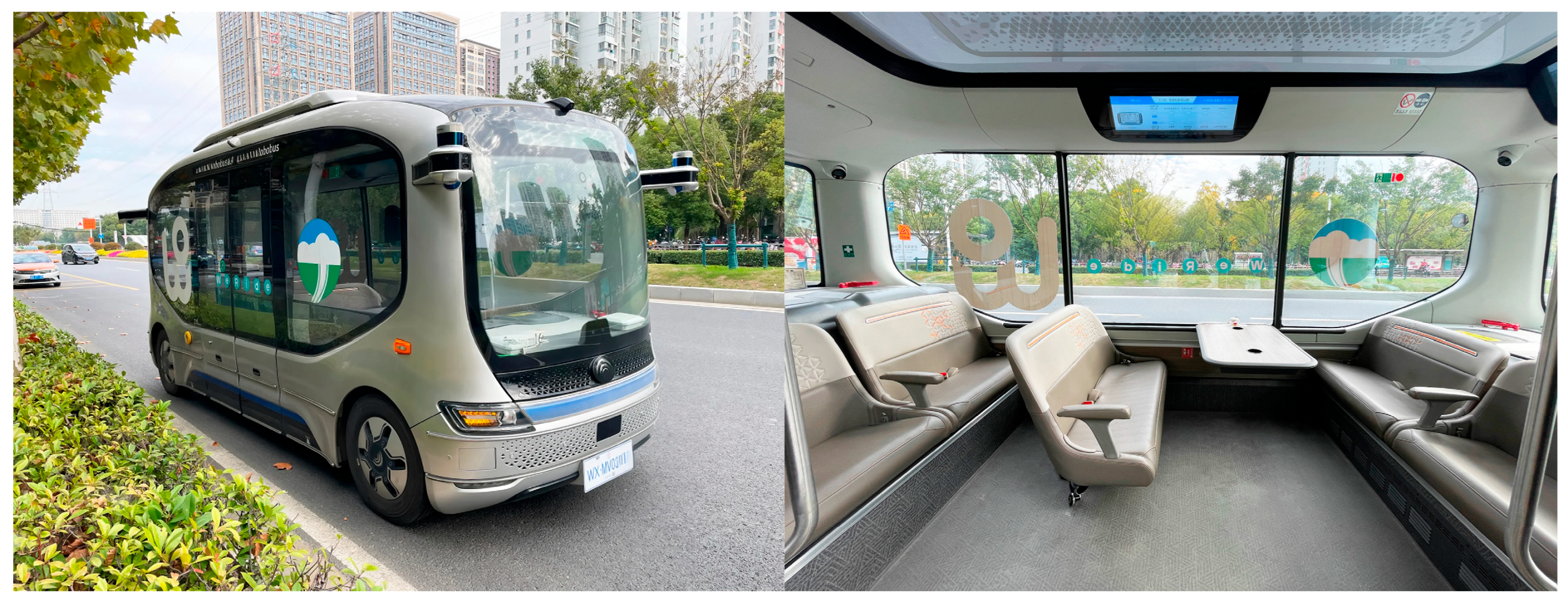
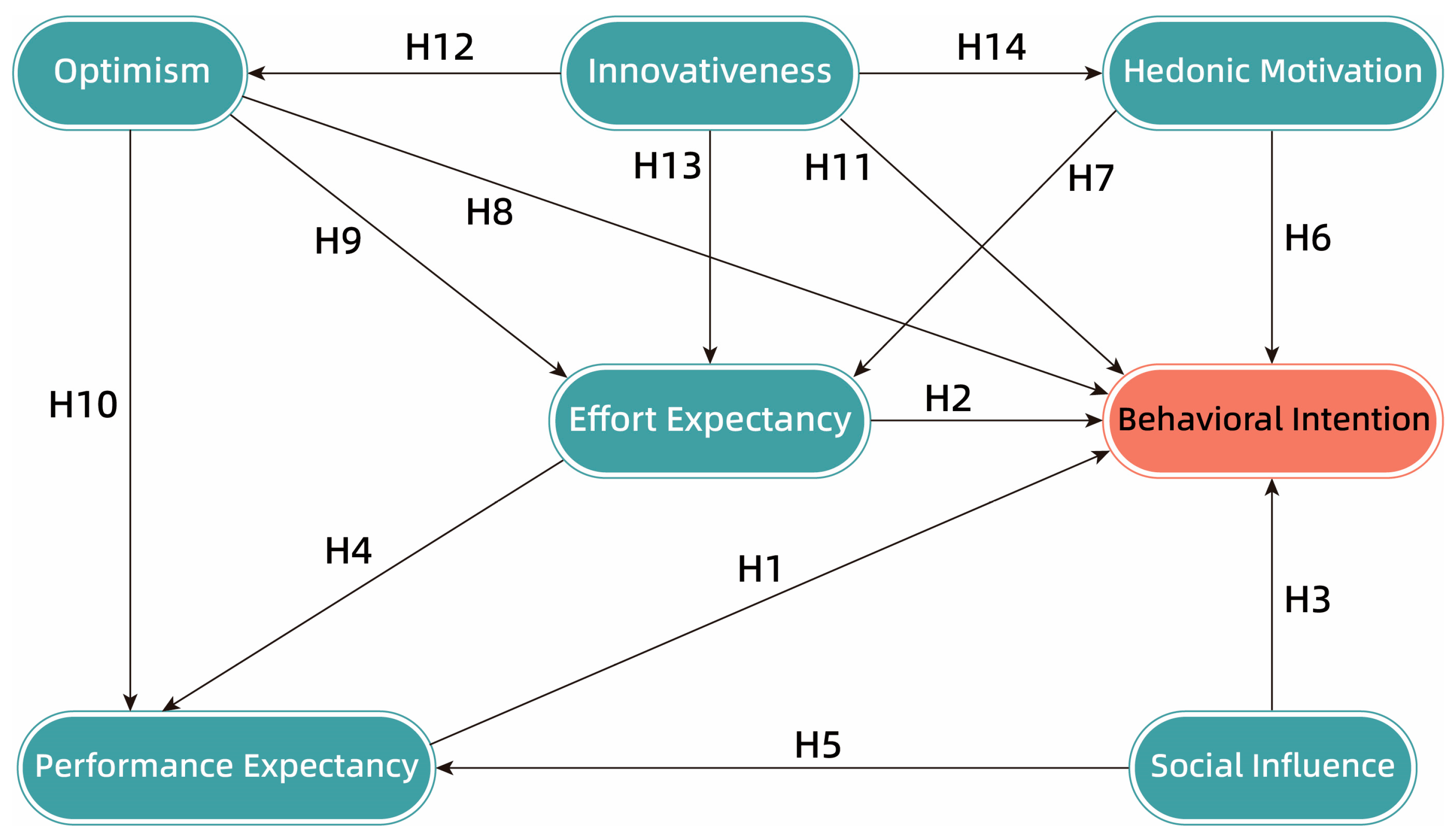
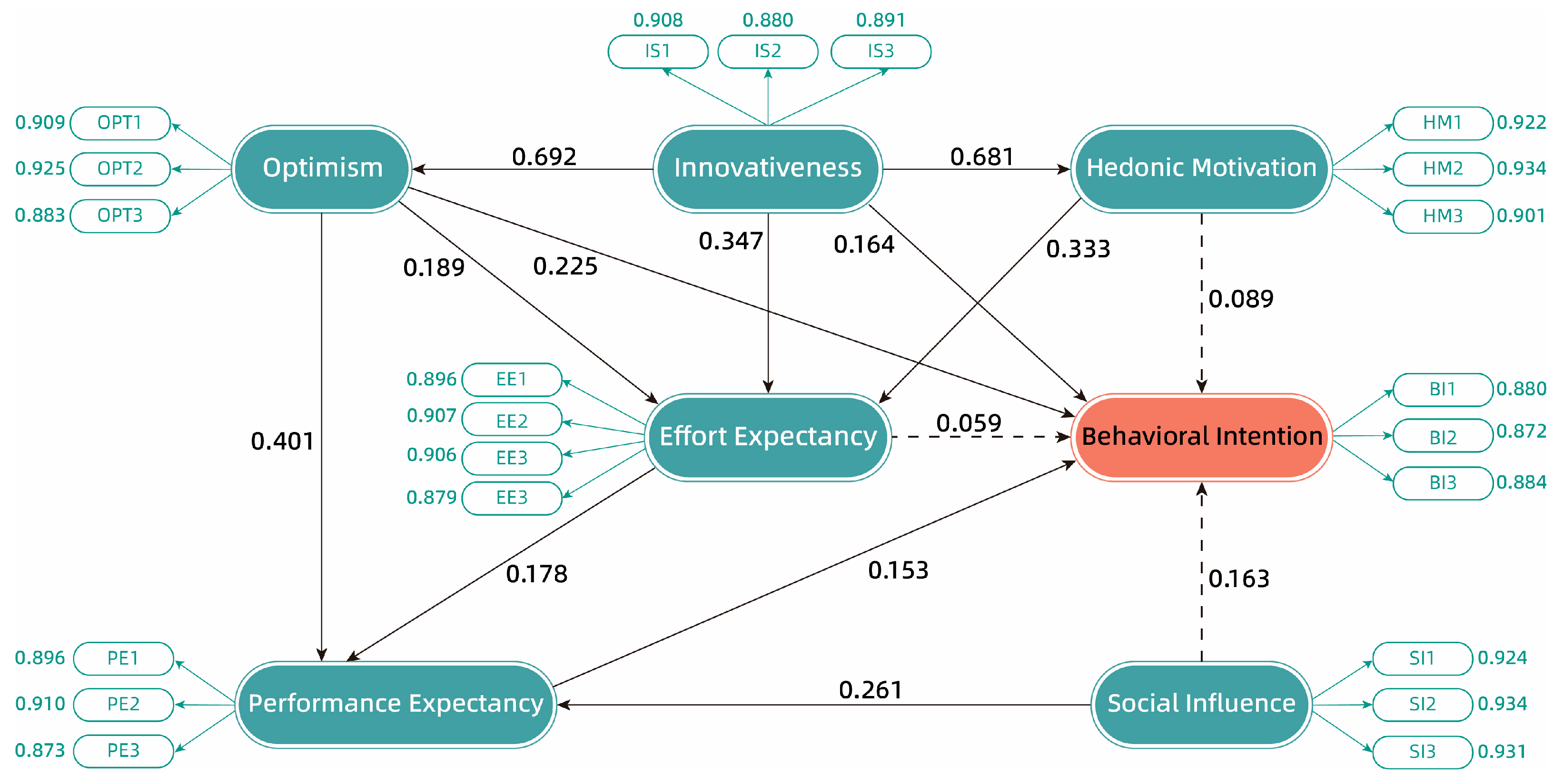
| Constructs | No. | Content | Source |
|---|---|---|---|
| Performance expectancy | PE1 | Autonomous buses can simplify my commuting process. | [12,23] |
| PE2 | Autonomous buses can improve my commuting efficiency. | ||
| PE3 | Autonomous buses can enhance my commuting comfort. | ||
| Effort expectancy | EE1 | Learning to take an autonomous bus is relatively easy for me. | [15,37] |
| EE2 | With smartphones and mobile payments, taking an autonomous bus should be very convenient. | ||
| EE3 | I will quickly get used to taking an autonomous bus. | ||
| EE4 | I can easily find information about the routes, stops, and operating times of autonomous buses. | ||
| Hedonic motivation | HM1 | I think taking an autonomous bus is a very novel experience. | [17,26] |
| HM2 | I find commuting by autonomous buses enjoyable. | ||
| HM3 | Sharing my experiences of taking an autonomous bus with others would make me happy. | ||
| Social influence | SI1 | If my family/friends/colleagues recommended that I take an autonomous bus, I would try it. | [38,39] |
| SI2 | If the people around me take autonomous buses, I might be influenced to ride one as well. | ||
| SI3 | When mass media/social media promotes and shares information about autonomous buses, I might want to ride one. | ||
| Optimism | OPT1 | Autonomous buses can improve the quality of my commuting life. | [40,41] |
| OPT2 | Autonomous buses provide more freedom for my commuting life. | ||
| OPT3 | Autonomous buses offer new options for my commuting life. | ||
| Innovativeness | IS1 | I am always attentive to new things (such as autonomous buses). | [42,43] |
| IS2 | I might be the first among my friends to know and share information about new things (such as autonomous buses). | ||
| IS3 | I always like to try new things (such as autonomous buses). | ||
| Behavioral intention | BI1 | If I commute by bus, I would prefer to choose an autonomous bus. | [44,45] |
| BI2 | If there were autonomous buses on the routes I usually take, I would take more frequently. | ||
| BI3 | If there were an autonomous bus route in my city, I would like to try it out specifically. |
| Category | Count | Ratio | |
|---|---|---|---|
| Gender | Male | 127 | 40.6 |
| Female | 186 | 59.4 | |
| Age | <18 | 4. | 1.3 |
| 18–25 | 80 | 25.6 | |
| 26–30 | 25 | 8 | |
| 31–40 | 63 | 20.1 | |
| 41–50 | 41 | 13.1 | |
| 51–60 | 72 | 23 | |
| >60 | 28 | 8.9 | |
| Educational background | High school and below | 37 | 11.8 |
| Junior College | 48 | 15.3 | |
| Bachelor | 162 | 51.8 | |
| Postgraduate | 66 | 21.1 | |
| Occupation | Government agency staff/civil servants | 43 | 13.7 |
| State-owned enterprise managers/employees | 20 | 6.4 | |
| Joint venture/foreign enterprise managers/employees | 6. | 1.9 | |
| Private enterprise managers/employees | 23 | 7.3 | |
| Professionals (such as doctors, lawyers, accountants, architects, etc.) | 15 | 4.8 | |
| Teachers | 91 | 29.1 | |
| Skilled or blue-collar workers | 3. | 1 | |
| Students (science and engineering majors) | 29 | 9.3 | |
| Students (literature and arts majors) | 34 | 10.9 | |
| Freelancers | 23 | 7.3 | |
| Others | 26 | 8.3 | |
| Place of residence | North China | 10 | 3.2 |
| East China | 107 | 34.2 | |
| Central China | 165 | 52.7 | |
| South China | 20 | 6.4 | |
| Southwest China | 6. | 1.9 | |
| Northwest China | 5. | 1.6 |
| Construct | Item | Factor Loading | VIF | Cronbach’s α | CR | AVE |
|---|---|---|---|---|---|---|
| BI | BI1 | 0.880 | 2.113 | 0.853 | 0.911 | 0.773 |
| BI2 | 0.872 | 2.080 | ||||
| BI3 | 0.884 | 2.105 | ||||
| EE | EE1 | 0.896 | 3.306 | 0.919 | 0.943 | 0.805 |
| EE2 | 0.907 | 3.418 | ||||
| EE3 | 0.906 | 3.225 | ||||
| HM | HM1 | 0.879 | 3.354 | 0.908 | 0.942 | 0.845 |
| HM2 | 0.922 | 3.776 | ||||
| HM3 | 0.934 | 2.500 | ||||
| IS | IS1 | 0.901 | 2.553 | 0.873 | 0.922 | 0.798 |
| IS2 | 0.908 | 2.180 | ||||
| IS3 | 0.880 | 2.353 | ||||
| OPT | OPT1 | 0.891 | 2.882 | 0.89 | 0.932 | 0.82 |
| OPT2 | 0.909 | 3.185 | ||||
| OPT3 | 0.925 | 2.213 | ||||
| PE | PE1 | 0.883 | 2.477 | 0.873 | 0.922 | 0.798 |
| PE2 | 0.896 | 2.700 | ||||
| PE3 | 0.910 | 2.065 | ||||
| SI | SI1 | 0.873 | 3.305 | 0.922 | 0.95 | 0.864 |
| SI2 | 0.924 | 3.567 | ||||
| SI3 | 0.934 | 3.368 |
| BI | EE | HM | IS | OPT | PE | SI | |
|---|---|---|---|---|---|---|---|
| BI | 0.879 | ||||||
| EE | 0.628 | 0.897 | |||||
| HM | 0.635 | 0.710 | 0.919 | ||||
| IS | 0.641 | 0.704 | 0.681 | 0.893 | |||
| OPT | 0.680 | 0.678 | 0.748 | 0.692 | 0.906 | ||
| PE | 0.637 | 0.667 | 0.638 | 0.664 | 0.720 | 0.893 | |
| SI | 0.680 | 0.829 | 0.774 | 0.722 | 0.760 | 0.714 | 0.930 |
| Hypothesis | Pathway | Pathway Coefficient | t-Value | p-Value | Support |
|---|---|---|---|---|---|
| H1 | PE→BI | 0.153 | 2.218 | 0.027 | Yes |
| H2 | EE→BI | 0.059 | 0.743 | 0.458 | No |
| H3 | SI→BI | 0.163 | 1.750 | 0.080 | No |
| H4 | EE→PE | 0.178 | 2.315 | 0.021 | Yes |
| H5 | SI→PE | 0.261 | 3.127 | 0.002 | Yes |
| H6 | HM→BI | 0.089 | 1.105 | 0.269 | No |
| H7 | HM→EE | 0.333 | 4.628 | 0.000 | Yes |
| H8 | OPT→BI | 0.225 | 2.946 | 0.003 | Yes |
| H9 | OPT→EE | 0.189 | 2.578 | 0.010 | Yes |
| H10 | OPT→PE | 0.401 | 6.484 | 0.000 | Yes |
| H11 | IS→BI | 0.164 | 2.269 | 0.023 | Yes |
| H12 | IS→OPT | 0.692 | 17.529 | 0.000 | Yes |
| H13 | IS→EE | 0.347 | 5.134 | 0.000 | Yes |
| H14 | IS→HM | 0.681 | 17.869 | 0.000 | Yes |
Disclaimer/Publisher’s Note: The statements, opinions and data contained in all publications are solely those of the individual author(s) and contributor(s) and not of MDPI and/or the editor(s). MDPI and/or the editor(s) disclaim responsibility for any injury to people or property resulting from any ideas, methods, instructions or products referred to in the content. |
© 2025 by the authors. Licensee MDPI, Basel, Switzerland. This article is an open access article distributed under the terms and conditions of the Creative Commons Attribution (CC BY) license (https://creativecommons.org/licenses/by/4.0/).
Share and Cite
Liang, Q.; Jiang, Q.; Wei, W. The Innovativeness–Optimism Nexus in Autonomous Bus Adoption: A UTAUT-Based Analysis of Chinese Users’ Behavioral Intention. Vehicles 2025, 7, 87. https://doi.org/10.3390/vehicles7030087
Liang Q, Jiang Q, Wei W. The Innovativeness–Optimism Nexus in Autonomous Bus Adoption: A UTAUT-Based Analysis of Chinese Users’ Behavioral Intention. Vehicles. 2025; 7(3):87. https://doi.org/10.3390/vehicles7030087
Chicago/Turabian StyleLiang, Qiao, Qianling Jiang, and Wei Wei. 2025. "The Innovativeness–Optimism Nexus in Autonomous Bus Adoption: A UTAUT-Based Analysis of Chinese Users’ Behavioral Intention" Vehicles 7, no. 3: 87. https://doi.org/10.3390/vehicles7030087
APA StyleLiang, Q., Jiang, Q., & Wei, W. (2025). The Innovativeness–Optimism Nexus in Autonomous Bus Adoption: A UTAUT-Based Analysis of Chinese Users’ Behavioral Intention. Vehicles, 7(3), 87. https://doi.org/10.3390/vehicles7030087








